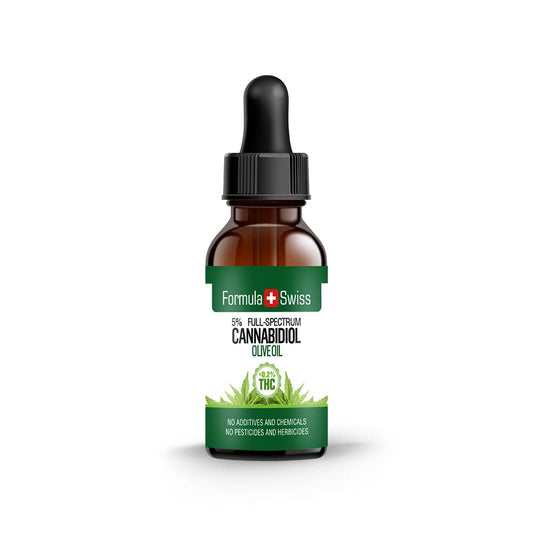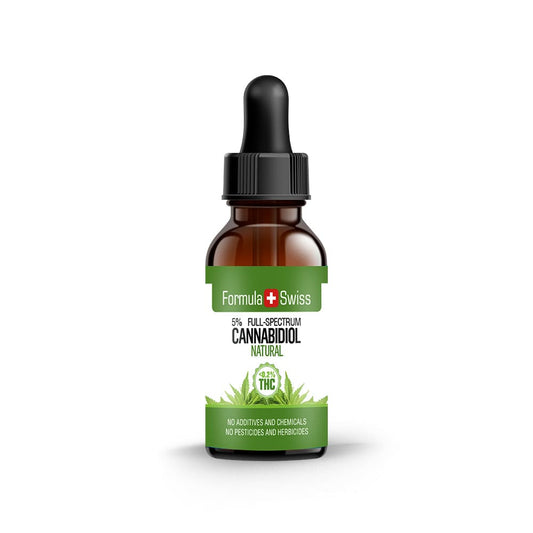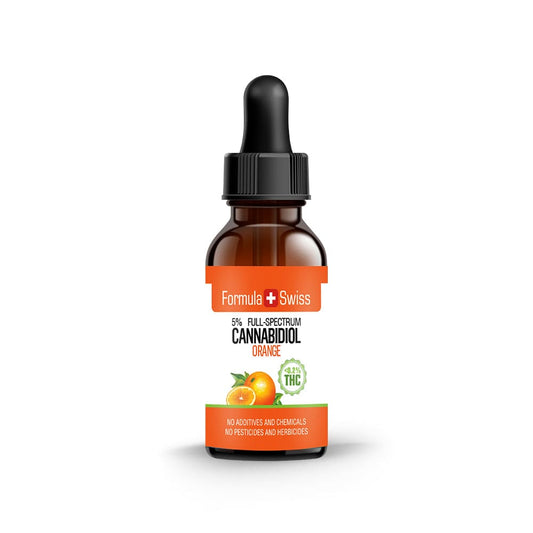HHCP, or hexahydrocannabiphorol, is one of the newer cannabinoids starting to gain attention in the industry. It’s a hydrogenated compound, closely related to THCP, and it’s been developed through synthetic processes as part of the ongoing exploration into how slight changes in cannabinoid structure can lead to new possibilities.
What makes HHCP interesting isn’t just its chemistry—it’s what it represents: a shift toward more targeted, fine-tuned approaches in cannabinoid development. Having spent over a decade working with hemp and cannabinoids, I’ve seen plenty of compounds come and go, but HHCP stands out as a sign of where things are headed.
In this article, I’ll break down what HHCP is, how it’s made, and what makes it different from other cannabinoids we’ve come to know. It’s still a relatively new name in the space, but it’s part of a much bigger movement to better understand hemp-derived compounds and how they can be refined.
My goal here is to offer a straightforward, informed perspective—cutting through the noise without jumping to conclusions.
Save up to 30% when you order your CBD oil today
Key takeaways
- HHCP (hexahydrocannabiphorol) is a hydrogenated cannabinoid structurally similar to THCP.
- It is synthetically derived through hydrogenation, altering its molecular structure.
- HHCP is part of a new class of cannabinoids gaining attention in the evolving hemp industry.
- Its chemical modifications may influence how it interacts with the body, though more research is needed.
- HHCP is not naturally abundant in the hemp plant and must be produced in controlled settings.
This article is provided for informational purposes only and does not relate to any of the products available in our webshop. For more information, please see our full disclaimer.
Introduction to HHCP (Hexahydrocannabiphorol)
In the world of cannabinoid research, HHCP is a big step forward. It's a synthetic version of cannabinoids, made to be more stable and potent. I'm excited to learn more about it and how it works.

HHCP is special because it has more hydrogen atoms. This makes it bind better to cannabinoid receptors. It's a key area of study in cannabinoid research.
HHCP has a longer side chain than delta-9-THC. It has seven carbon atoms, not five. This makes it much stronger, even stronger than THCP, which is 30 times more potent than delta-9-THC.
| Cannabinoid | Side chain length (carbon atoms) | Estimated potency relative to delta-9-THC |
|---|---|---|
| Delta-9-THC | 5 | 1x |
| THCP | 7 | 30x |
| HHCP | 7 | 10 - 30x stronger than THCP |
It's important to understand HHCP for scientists and teachers. They want to use it safely for health and fun. This knowledge helps us use it wisely.
Order and get up to 30% off your CBD oil
The scientific synthesis of HHCP
Hexahydrocannabiphorol (HHCP) is a big step forward in cannabinoid science. It focuses on scientific synthesis, HHCP production, and chemical modifications. These changes make it more stable and potent.
The first step is hydrogenating its molecular structure. This makes it more stable and better at dissolving in fats. Then, it gets an ethyl group added, which makes it bind better with cannabinoid receptors.

This binding is key for its psychoactive effects. These effects are stronger because of the changes. The last step is adding an O-methyl group to make HHCPM. This version is easier to handle at room temperature.
There are also two stereoisomers of HHCP: 9(R)-HHCP Methyl Ether and 9(S)-HHCP Methyl Ether. They have different effects on the body's endocannabinoid system. Each isomer has a unique way of binding to CB1 and CB2 receptors.
By studying these processes, scientists can unlock HHCP's full potential. This could lead to new treatments in medicine and healthcare. The research into HHCP production and modification is exciting for the future of cannabinoid science.
Comparing HHCP with other cannabinoids
In the world of cannabinoids, knowing each compound's unique traits is key. We'll look closely at HHCP compared to THC and CBD.
HHCP and THC both share a dibenzopyran ring structure, but HHCP features a longer heptyl side chain compared to THC’s pentyl chain. This structural modification likely increases HHCP’s lipophilicity, which may enhance its interaction with cannabinoid receptors, though this has not yet been experimentally confirmed.
These findings were reported in a study published in Drug Testing and Analysis, which used advanced analytical techniques to characterise the composition, isomers, and synthetic origins of commercially available HHCP samples.
Similarities and differences with CBD
HHCP and CBD are both cannabinoids related to the cannabis plant, but they exhibit markedly different properties. According to a 2025 publication in Toxicology Reports, HHCP has been described as psychoactive and has been linked to neurological responses such as sedation and altered states of consciousness.

In contrast, CBD is classified as non-psychoactive and does not produce intoxicating effects, highlighting its distinct pharmacological profile.
These contrasting properties mean that each compound is typically suited to different contexts. CBD is often selected by individuals seeking effects without a euphoric experience. HHCP, due to its intensity, may be explored in situations where stronger responses are desired.
Understanding the distinctions between cannabinoids like HHCP and CBD can assist stakeholders in making informed decisions based on the specific properties and potential applications of each compound.
Exploring the molecular formula of HHCP
The molecular formula of HHCP (Hexahydrocannabiphorol) is quite interesting. It's key for those doing HHCP analysis. Below, we look at its chemical composition. This shows why it's special among synthetic cannabinoids.
The molecular formula for HHCP is C24H38O2. It has 24 carbon atoms, 38 hydrogen atoms, and 2 oxygen atoms. Each atom is crucial for its properties and effects.

HHCP is a hydrogenated version of traditional cannabinoids. It has changes that make it unique in the cannabinoid family.
Understanding HHCP means looking at its molecular modifications. It has two more carbons in its side chain than HHC. This makes it similar to THCP, known for its strong effect on cannabinoid receptors.
| Compound | Molecular formula | Carbon atoms | Hydrogen atoms | Oxygen atoms |
|---|---|---|---|---|
| HHCP | C24H38O2 | 24 | 38 | 2 |
| HHC | C22H36O2 | 22 | 36 | 2 |
| THCP | C29H48O2 | 29 | 48 | 2 |
A recent study published in Drug Testing and Analysis suggests that HHCP’s extended heptyl side chain may lead to increased metabolic activity compared to HHC. This structural difference could influence how the compound is processed in the body and may contribute to enhanced potency.
Order CBD oil now and save as much as 30%
Psychoactive properties of HHCP
Hexahydrocannabiphorol (HHCP) has been getting more attention lately, especially for how it might interact with the body’s endocannabinoid system, even though direct research on it is still pretty limited.
That said, a 2023 study in ACS Chemical Biology looked at a closely related compound, hexahydrocannabinol (HHC), and found something interesting: the 9(R) version of HHC showed strong binding to both CB1 and CB2 receptors.
That’s the same general pathway THC uses, which is known for its psychoactive effects. It really highlights how even small tweaks in a cannabinoid’s structure, like changes in stereochemistry, can play a big role in how it behaves.

Impact on perception and cognition
HHCP’s influence on perception and cognition is an area of growing interest. Anecdotal reports suggest it may alter sensory experiences and promote a sense of calm, though these effects are not yet well understood. More research is needed to explore its mechanisms and broader implications.
Exploring how HHCP interacts with the endocannabinoid system opens the door to deeper scientific understanding. While much is still unknown, ongoing studies continue to shed light on this cannabinoid’s unique characteristics and its potential role in cannabinoid research.
Future of HHCP in cannabinoid science
HHCP is a key area of study in cannabinoids, blending scientific progress with mystery. It shows the power of hard work in science. By looking closely at its molecular details, we see its huge potential to change how we use cannabinoids.
It's crucial to do more research and trials carefully. But the future of HHCP looks bright, driven by the science community's curiosity.
HHCP's discovery marks a big step in cannabinoid science. I believe it will lead to huge breakthroughs. Its unique way of working with our body's systems suggests new possibilities.

As we dive into these new findings, I'm excited about what HHCP and others might bring. They could start a new era of using cannabinoids.
The path ahead for HHCP is strong, thanks to the solid research base. Its impact could be huge, opening a new chapter in cannabinoid studies.
Personal perspective
I’ve spent a lot of time working with cannabinoids and digging into the finer details of hemp production, and HHCP (hexahydrocannabiphorol) really stands out as something worth paying attention to. It’s a fascinating compound—both in how it’s made and how it fits into the bigger picture of phytocannabinoids.
What draws me in is the combination of chemistry and innovation; HHCP is a great example of how this space keeps evolving. Over the years, my focus has always been on understanding these compounds deeply while also making sure the information we share is honest, responsible, and clear.
When I started looking into HHCP more closely, my goal was to unpack its structure and background in a way that made sense to anyone curious about where cannabinoids are heading.
The industry moves fast, and there’s a real need for grounded, trustworthy insight—especially with newer compounds like this. I try to approach it with an open mind and a critical eye, always aiming to give readers something useful without the hype.
Don’t miss out—save up to 30% when you purchase CBD oil today
Frequently asked questions
What exactly is HHCP (Hexahydrocannabiphorol)?
HHCP, short for hexahydrocannabiphorol, is a man-made cannabinoid. It does not occur naturally and is synthesised in laboratories through complex chemical processes.
How is Hexahydrocannabiphorol (HHCP) produced scientifically?
HHCP is produced by modifying its molecular structure to enhance stability and fat solubility. The process includes the addition of an ethyl group and an O-methylation step.
In what ways does HHCP differ structurally from THC?
HHCP and THC have similar molecular frameworks. However, HHCP features a methyl ether group and a hydrogenated core, resulting in distinct interactions at the molecular level.
Are HHCP and CBD similar?
HHCP and CBD are both cannabinoids, but they differ significantly. CBD is naturally occurring, whereas HHCP is synthetic and structurally more complex.
What is the molecular formula of HHCP and its significance?
HHCP's molecular formula is C24H38O2. This identifies it as a hydrogenated compound, distinguishing it from other cannabinoids in terms of structure and properties.
How does HHCP interact with the endocannabinoid system?
HHCP is believed to engage with CB1 and CB2 receptors within the endocannabinoid system. Preliminary data on the 9(R) stereoisomer suggests activity associated with altered perception though research remains ongoing.
What are the subjective effects of HHCP according to user reports?
Anecdotal reports suggest that HHCP may lead to sensations of euphoria and shifts in cognitive perception. Effects are reported to appear relatively quickly and vary in duration.
What does current research suggest about HHCP's potential applications?
Research into HHCP is still developing. While there is interest in its unique properties, further studies are necessary to better understand its characteristics and possible roles in cannabinoid research.
How do the isomers 9(R)-HHCP methyl ether and 9(S)-HHCP methyl ether compare in terms of biological activity?
Scientific studies indicate that the 9(R)-HHCP methyl ether displays noticeable activity, whereas the 9(S) variant does not. This highlights the influence of stereochemistry on how cannabinoids behave in biological systems.
What advances does HHCP represent in the field of cannabinoid science?
HHCP represents a new direction in cannabinoid research. Its distinctive molecular structure and synthetic origin present opportunities for further exploration within the scientific community.
What is HHC (Hexahydrocannabinol)?






